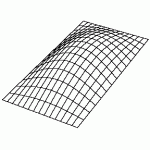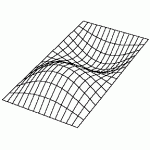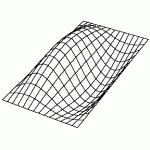Geddes is not my boss, and I'm not going to put up with his condescending comments. If he has something to teach me, which I doubt, he can do it in a civil manner or I'm going to speak up and say something. And maybe if you spoke up for yourself and said something to your boss he wouldn't treat you with such disrespect.Personally, I think we do not need to be so sensitive about some comments. I somebody posts “Audio "magic" at work again!” we could also answer something like: “could be, because I definitely here it, and it doesn’t show up in the frequency response I made. Any tips how I could measure this phenomenon?”
By posting like this we could actually learn something, and other readers wouldn’t have to read tons of personal attacks going in all direction.
My boss make remarks like this all day long, and the best way to cope with this is to laugh with it, and every now and them, outsmart him in public…
So in conclusion, lets prove Dr Geddes is wrong, then you can feel good also, and we have learned yet another thing!
IMO posts like yours adds fuel to the fire - things were pretty much settled amongst ourselves, and now your post is prolonging the off topic discussion. So let's end this and get back to discussing bracing, shall we? 😉
If your speaker is jiggling around, then there may be some sort of energy loss with respect to the sound that might show up in fr measurement.
Why don't you just measure it and be done with it?
Your original post suggests the experience might be an imaginative artifact:
So why are you surprised someone might say it's audio magic when you dismiss the idea straight up that it's measurable?
Why don't you just measure it and be done with it?
Your original post suggests the experience might be an imaginative artifact:
Don't know if that would show up on frequency response graph, but it shows up to my ears
So why are you surprised someone might say it's audio magic when you dismiss the idea straight up that it's measurable?
Um, can we get back to bracing please? Personalities sometimes get in the way of otherwise stimulating conversations.
The most effective radiation will be the lower frequencies where all the walls are moving in the same direction - the monopole or breathing mode. This mode is a very efficient radiator and needs to be controlled. But the higher frequency modes all tend to cancel in the far field because there is always about the same total motion out as there is in. This is why the "cross brace" works so well - it restrains the breathing mode by tieing all the panels into a common center point which is rigidly held, by the mutually perpendicular braces.
In this mode, there is no difference between a cross brace and individual rods or dowels connecting opposite panels. In the inhale motion of the box, all rods are in tension and the joined center of the cross brace doesn't do anything. In the exhale motion, all rods are in compression, so likewise, the joined center doesn't do anything. This assumes that each of the opposite walls are the same size and have the same resonant frequencies, which is not the case for the front baffle and rear panel. Upon further reflection, it would seem obvious to me that we would want to isolate the unequal panels from the equal side panels by NOT joining the dowels/rods at a central point. The difference in resonance between the side panels and the front or rear panel would cause a transfer of vibration from one to the other through the joined central cross connection.
Last edited:
In the exhale motion, all rods are in compression, so likewise, the joined center doesn't do anything. ...
That depends on the rods. All rods or rectangular cross members can and will bend under compression. At least to some degree.
Joining the rods as they cross will reduce that tendency to bend under compression.
The point I am trying to make is that this deformation should be taken into account when designing an enclosure and not utilize cross members that are not resilient enough and anchoring cross members that are oblique to each other only improves the rigidity of the system. So, not a bad thing to do.
That depends on the rods. All rods or rectangular cross members can and will bend under compression. At least to some degree.
Joining the rods as they cross will reduce that tendency to bend under compression.
The point I am trying to make is that this deformation should be taken into account when designing an enclosure and not utilize cross members that are not resilient enough and anchoring cross members that are oblique to each other only improves the rigidity of the system. So, not a bad thing to do.
My assumption is that the rods are sufficiently rigid that any bending is insignificant.
My point is that if the panels are tied together by a rigid crosspiece, then the fact that some panels resonant at different frequencies means that this energy will be transferred to the other panels, thus producing secondary vibration. My personal opinion is that only the panels with the same resonant frequency should be tied together by rods.
In this mode, there is no difference between a cross brace and individual rods or dowels connecting opposite panels. In the inhale motion of the box, all rods are in tension and the joined center of the cross brace doesn't do anything. In the exhale motion, all rods are in compression, so likewise, the joined center doesn't do anything. This assumes that each of the opposite walls are the same size and have the same resonant frequencies, which is not the case for the front baffle and rear panel. Upon further reflection, it would seem obvious to me that we would want to isolate the unequal panels from the equal side panels by NOT joining the dowels/rods at a central point. The difference in resonance between the side panels and the front or rear panel would cause a transfer of vibration from one to the other through the joined central cross connection.
By "in this mode", I am assuming that you mean the monopole mode. Yes, in that mode attaching the cross braces together at their centers does nothing, but the cross brace itself is extremely effective for minimizing this mode. However, for the next mode up, the dipole mode, the cross brace does nothing by itself, but is extremely effective when it is attached to the other crossbrace. You really cannot live without doing both, it is required.
My assumption is that the rods are sufficiently rigid that any bending is insignificant.
My point is that if the panels are tied together by a rigid crosspiece, then the fact that some panels resonant at different frequencies means that this energy will be transferred to the other panels, thus producing secondary vibration. My personal opinion is that only the panels with the same resonant frequency should be tied together by rods.
Remember, the total energy in the system must stay the same (Law of Thermodynamics). Any vibrational energy in the enclosure wall ideally should be dissipated as heat.
So, co-joining panels with braces may, indeed, transfer some of that vibrational energy to other panels. However, the total energy of the system must be the same (minus any losses to friction), therefore the vibrations are spread out amongst the whole. Any secondary vibration must come at a loss of primary vibration somewhere else (again, Laws of Thermodynamics).
The more of the system that is co-joined should result in a faster dissipation of that energy.
My personal opinion is that only the panels with the same resonant frequency should be tied together by rods.
The idea is that by cross coupling the panels you raise the modes frequency thereby lowering its amplitude, i.e. the box is "stiffer" and for a given force moves less. What the actual resonant frequency of the panels are is not relavent. Once they become coupled ther are a single system and don't have individual resonances, but coupled ones. Remember what the driving force is, at LFs its the air pressure in the box which acts uniformly on all panels. At HFs its the drivers reactance force, but this, in my designs, is isolated from the box, so its not an issue.
I am now firmly of the opinion that cabinets are all about damping and not about resonances. Its the damping of the material that matter most for the HFs and the stiffness of the composite structure at LFs.
Well not actually "ideally", its always that way. All vibrational energy gets dissipated as heat.Any vibrational energy in the enclosure wall ideally should be dissipated as heat.
Correct.The more of the system that is co-joined should result in a faster dissipation of that energy.
I am now firmly of the opinion that cabinets are all about damping and not about resonances. Its the damping of the material that matter most for the HFs and the stiffness of the composite structure at LFs.
Bingo!
It all boils down to the transfer of acoustic energy (in the enclosure structure) to some other form of energy (i.e., heat).
Remember, the total energy in the system must stay the same (Law of Thermodynamics). Any vibrational energy in the enclosure wall ideally should be dissipated as heat.
So, co-joining panels with braces may, indeed, transfer some of that vibrational energy to other panels. However, the total energy of the system must be the same (minus any losses to friction), therefore the vibrations are spread out amongst the whole. Any secondary vibration must come at a loss of primary vibration somewhere else (again, Laws of Thermodynamics).
The more of the system that is co-joined should result in a faster dissipation of that energy.
OK, good points. I just got an idea. Instead of rigid dowels or rods connecting opposing panels, we should be using dampers, like car shock absorbers.... 😀
I wonder if Koni makes them?
OK, good points. I just got an idea. Instead of rigid dowels or rods connecting opposing panels, we should be using dampers, like car shock absorbers.... 😀
I wonder if Koni makes them?
You are right!
The easiest way to do that is to use a system called Constrained Layer Damping.
Basically, the enclosure is a box inside a box. In between the two boxes is a layer of viscoelastic material that turns the "shear" forces in the vibrating panels into heat via the friction of that viscoelastic layer.
My last build uses that exact approach. I used a substance called Green Glue to fill the gap of about .025" between the two layers of wood.
By "in this mode", I am assuming that you mean the monopole mode. Yes, in that mode attaching the cross braces together at their centers does nothing, but the cross brace itself is extremely effective for minimizing this mode. However, for the next mode up, the dipole mode, the cross brace does nothing by itself, but is extremely effective when it is attached to the other crossbrace. You really cannot live without doing both, it is required.
You said that the dipole mode was ineffective in transmitting sound to the listener compared to the monopole mode. Are you playing a numbers game, as you've accused others of doing?
I don't see how a rigid cross brace minimizes the monopole vibrational mode. Braces between panels will of course change their respective resonant frequencies. However, the resonant frequencies of each panel are going to be transmitted by the rigid cross brace to other panels, which to me is not a good idea.
You are right!
The easiest way to do that is to use a system called Constrained Layer Damping.
Basically, the enclosure is a box inside a box. In between the two boxes is a layer of viscoelastic material that turns the "shear" forces in the vibrating panels into heat via the friction of that viscoelastic layer.
My last build uses that exact approach. I used a substance called Green Glue to fill the gap of about .025" between the two layers of wood.
Yeah, I'm going to use self adhesive butyl rubber sheet in my subwoofer build... and dowels! 😛
You said that the dipole mode was ineffective in transmitting sound to the listener compared to the monopole mode. Are you playing a numbers game, as you've accused others of doing?
I don't see how a rigid cross brace minimizes the monopole vibrational mode. Braces between panels will of course change their respective resonant frequencies. However, the resonant frequencies of each panel are going to be transmitted by the rigid cross brace to other panels, which to me is not a good idea.
Dirkwright
You need to think this through better since nothing that I said was contradictory and a cross brace does dramatically stiffen the cabinet in its monopole mode (and hence lower the sound radiation) when compared to not having this crossbrace.
I ran out of 3/4" ply when building my garage speakers
Pulled 1/2" ply from the rafters and laminated them together with silicone then
screwed them together. The panel is 6 feet tall, 12.7 inches wide and now over an inch thick. Glued wood scraps on the inside of the panel to break up standing
waves and get very slight vibration when the arrays are at very loud levels.
I've become a fan of laminating 1/2" ply to 1" thick ply with silicone, it seems to
work better.
Would using 1/2" chip board laminated with silicone to 1/2" ply be a better solution?
Pulled 1/2" ply from the rafters and laminated them together with silicone then
screwed them together. The panel is 6 feet tall, 12.7 inches wide and now over an inch thick. Glued wood scraps on the inside of the panel to break up standing
waves and get very slight vibration when the arrays are at very loud levels.
I've become a fan of laminating 1/2" ply to 1" thick ply with silicone, it seems to
work better.
Would using 1/2" chip board laminated with silicone to 1/2" ply be a better solution?
You need to think this through better since nothing that I said was contradictory and a cross brace does dramatically stiffen the cabinet in its monopole mode (and hence lower the sound radiation) when compared to not having this crossbrace.
Obviously, I can see how adding any kind of brace in the center of a rectangular panel will change the resonant mode from (1,1) to (2,1) and possibly (2,2). Both of the other resonant modes are at a higher frequency, which is what we want. A single dowel in the center of the panel produces an unknown to me resonant mode, but I can assume that modes (2,1) and (2,2) will become dominant. Adding multiple dowels must complicate things even further. If two identical panels are joined by a single dowel or rod, then I can't see how modes (2,1) and (2,2) would be further suppressed by making a rigid cross brace that connects to two orthogonal panels in the same box, each with different resonant frequencies.
Attachments
I suppose that mode (2,1) is also the result of a single dowel, brace, or rod in the center of the rectangular panel. I don't know for sure.
What has not been mentioned, but probably assumed, is that the panels should be divided unequally.
This way it breaks the resonance mode so that no two panels have the same resonance frequency.
I use shelves with the centers cut out to do this. This is my 15" build with a contained layer of green glue between two layers of Baltic Birch.
An externally hosted image should be here but it was not working when we last tested it.
- Status
- Not open for further replies.
- Home
- Loudspeakers
- Multi-Way
- Bracing overkill yay or nay ?



